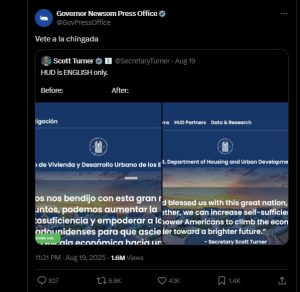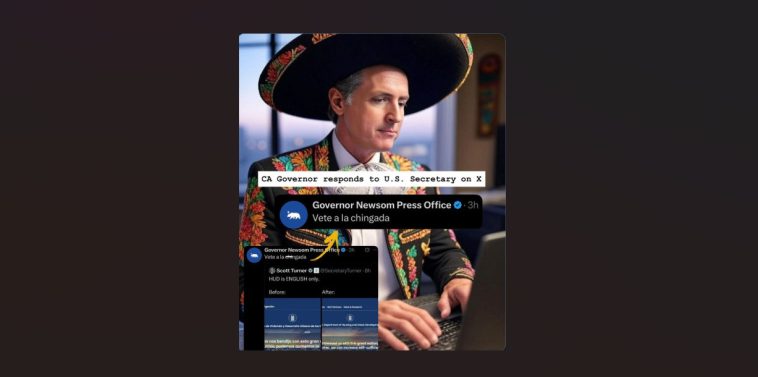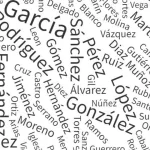Students of Spanish often encounter phrases that carry a much deeper meaning than their literal translation, and Governor Newsom’s recent tweet, “Vete a la Chingada,” is a good example. While it is a highly offensive expression in many contexts, its use in this particular political situation takes on a nuanced, “playful trolling” tone, which is important for understanding modern Spanish communication.

Let’s first break down the core meaning of the phrase.
The Basic Meaning of “Vete a la Chingada”
The phrase “Vete a la Chingada” is derived from the verb “chingar,” which is one of the most common vulgar verbs in Mexican Spanish.
The verb “chingar” itself is versatile, carrying multiple meanings in informal and vulgar contexts, such as to screw up or to fail, to annoy or to bother, or to grab or to take.
When used in the phrase “Vete a la Chingada,” it functions as a very common “go to hell” expression in Mexico. Essentially, it conveys a strong sense of dismissal, anger, or extreme frustration, similar to “Go to hell” or “Go screw yourself” in English. “La Chingada” metaphorically refers to a very bad place, akin to “hell” or “the middle of nowhere.”
Despite its vulgarity and offensive nature, “chingar” and its derivatives like “La Chingada” are widely used in Mexican Spanish. Nowadays, you might even hear this word in YouTube videos.
The Political “Trolling” and Context
Governor Newsom’s use of “Vete a la Chingada” was not a casual outburst of anger in the traditional sense. In this specific instance, it was described as “kind of playful” and intended as “trolling” a Trump government official. To “troll” someone online means to deliberately provoke them or elicit an emotional response, often for entertainment or political point-scoring.
The context for Newsom’s tweet was a direct response to the official saying that only English should be allowed. By using a strong, informal Spanish phrase, Newsom was making a clear statement of defiance against an “English-only” stance.
This act can be seen as using language to “resist against power”, or in this case, against a particular political ideology concerning language use. The phrase, though offensive on its own, became a symbol of opposition.
This political “trolling” meant that the post became very popular among anti-MAGA people, with many people repeating the same phrase on social media. This shows how a phrase can quickly become a rallying cry or an act of solidarity within a specific social and political group. It highlights how language choices can construct and reinforce social identities and collective stances.
This situation exemplifies the concept of sociolects—varieties of a language used by particular social groups. Newsom’s tweet, while utilizing a highly informal and vulgar expression, became a functional piece of communication within a specific political sociolect, understood and appreciated by its intended audience, despite (or perhaps because of) its inherent rudeness.
Why This Matters for Spanish Students
For students of Spanish, understanding this incident provides several key insights:
Comprehension, Not Usage: While “Vete a la Chingada” is a very common expression in Mexico, its highly offensive connotation means it should generally be avoided in most social settings if you are a learner. However, understanding its meaning and varied contextual uses is crucial for comprehension, especially when encountering it in media, literature, or informal conversations.
The Power of Context: This event vividly illustrates how context fundamentally alters the perceived intent and impact of words. A phrase that is usually deeply offensive can, in a specific political “trolling” scenario, be interpreted by some as a bold statement or even a form of playful defiance.
Language and Identity: Language is not just about grammar and vocabulary; it’s also about identity and social dynamics. Newsom’s use of Spanish in response to an “English-only” advocate, and its subsequent popularity among a specific political group, highlights how language can be used to express solidarity, resistance, and group identity.
Be Cautious to Avoid “Meter la Pata”: Just as one might encounter other strong expressions like “mierda” (which, when used as an insult, functions as a “pure experience of the language” rather than a literal truth), it’s vital to recognize their emotional and social weight. Misusing a phrase like “Vete a la Chingada” can lead to serious social blunders. As the saying goes, you don’t want to “meter la pata” (to screw up or make a mistake). Knowing why certain words are powerful, without necessarily using them yourself, is a sign of advanced language comprehension.
An example of these blunders involving “chingada” was what the now King of Holland did in Mexico: he used the word during a formal speech in front of many Mexican diplomatic officials.
Governor Newsom’s tweet serves as a fascinating and controversial, case study in Mexican Spanish slang, and the power of language in political discourse. It teaches us that words are not always static; they can be transformed by intent, audience, and the political context.




